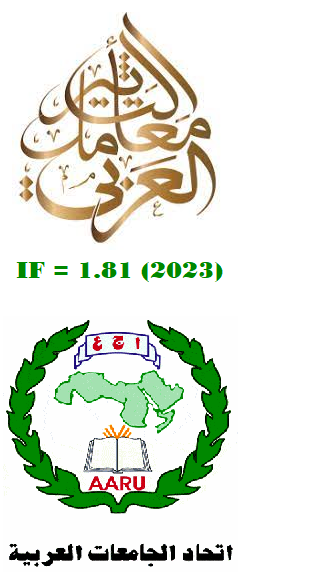Analyzing Iraqi Political Cartoons
A Semiotic Model
Abstract
Pictures have an essential effect on our thoughts and decisions. We have also noticed how these pictures produced in the form of cartoons affect our viewpoints. They do so since we are addicted to social media to the extent it can manipulate our thoughts unconsciously and obnoxiously. Besides, people don’t have the courage to express their viewpoints clearly, so they tend to use the satire to keep their face. This motivates the researcher to analyze the underlying structure of this satire presented in caricatures to read the message clearly. This research aims at revealing the way the political caricatures are produced and the main characteristics of political caricatures. Incorporating a methodology depending on selecting some samples, this paper is a semiotic analysis of political caricatures announced through the election campaign 2018 in Iraq. It concentrates on the format caricatures used as a communicative channel on net platform to come up with essential senses and prevailing political matters. This is carried out by adopting Barthes’ semiotic theory which is the first apparent semiotic approach. It is a good means to analyze the implied structure, including the dictionary and implied senses of creating influence of political caricatures. Besides, it provides us with a good means to interpret and understand political caricatures. This is quite important since political cartoons work as an approach to comprehend human consciousness.
Downloads
References
Abbasian, M., & Azeez, I. (2021). The effect of using flipped class on teaching reading comprehension at Cihan University. Cihan University-Erbil Journal of Humanities and Social Sciences, 5(1), 101-105.
Akande, O. (2002). A Semiotic Analysis of Political Cartoons: A Case study of Nigeria. (Unpublished Doctoral Dissertation). Norman, USA: University of Oklahoma.
Ako, E.E., & Ottoh, B.O. (2011). A semiotics of cartoons in two Nigerian newspapers: The punch and The Guardian. LWATI: A Journal of Contemporary Research, 8(3), 79-90.
Al-Momani, K., Badarneh, M.A., & Migdadi, F. (2016). A Semiotic analysis of political cartoons in Jordan in light of the Arab Spring. International Journal of Humor Research, 29(4), 507-538.
Barthes, R. (1967). In: Annette, L., & Smith, C., editors. Elements of Semiology. New York: Hill and Wang.
Ekman, P. (1965). Differential communication of affect by head and body cues. Journal of Personality and Social Psychology, 2(5), 726-735.
El Refaie, E. (2009). Multiliteracies: How readers interpret political cartoons. Visual Communication, 8(2), 181-205.
Elliott, E., & Jacobs, A. (2013). Facial expressions, emotions, and sign language. Frontiers in Psychology, 4, 115.
Hajjaj, D. (2018). The use of body language in Jordanian cartoons: A semiotic analysis. Advances in Language and Literary Studies, 9(3), 19.
Mhamdi, C.A. (2017). The use of political cartoons during popular protests: The case of the 2011 Tunisia uprising. Journal English Studies, 15, 193.
Moody, W., Wendy, O., Sinha, P., & Pammi, K. (2010). An exploratory study: Relationships between trying on clothing, mood, emotion, personality, and clothing preference. Journal of Fashion Marketing and Management, 14(1), 161-179.
Owyong, Y. (2009) Clothing semiotics and the social construction of power relations. Social Semiotics, 19(2), 191-211.
Sandra, C. (2003). The Communication Handbook: A Student Guide to Effective Communication. Lansdowne: Juta and Co. Ltd.
Shaikh, N., Tariq, R., & Saqlain, N. (2010). Cartoon War….A political dilemma! A semiotic analysis of political cartoon. Journal of Media Studies, 31(1), 74-92.
Tsakona, V. (2008). Language and image interaction in cartoons: Towards a multimodal theory of humor. Journal of Pragmatics, 41(6), 1171-1188.
Copyright (c) 2022 Huda Y. Abdulwahid

This work is licensed under a Creative Commons Attribution-NonCommercial-NoDerivatives 4.0 International License.
Authors who publish with this journal agree to the following terms:
1. Authors retain copyright and grant the journal right of first publication with the work simultaneously licensed under a Creative Commons Attribution License [CC BY-NC-ND 4.0] that allows others to share the work with an acknowledgment of the work's authorship and initial publication in this journal.
2. Authors are able to enter into separate, additional contractual arrangements for the non-exclusive distribution of the journal's published version of the work (e.g., post it to an institutional repository or publish it in a book), with an acknowledgment of its initial publication in this journal.
3. Authors are permitted and encouraged to post their work online (e.g., in institutional repositories or on their website) prior to and during the submission process, as it can lead to productive exchanges, as well as earlier and greater citation of published work (See The Effect of Open Access).









